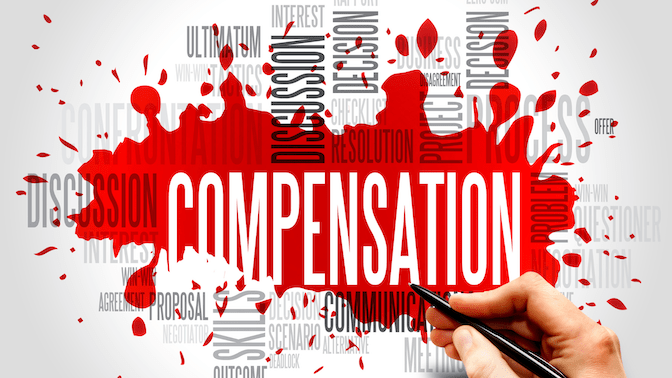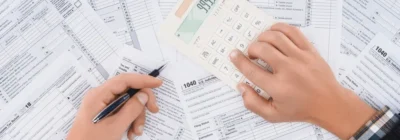Input vat compensation
Patrick Gordinne Perez2024-02-01T17:29:47+00:00In the business world, input VAT compensation is a crucial issue that needs to be understood and handled properly. In this article, we will explore some important concepts related to VAT, such as input and output VAT, the difference between input and output VAT, as well as when the Treasury refunds the VAT to be offset and what is its expiry.
We hope this information will be useful for readers seeking a deeper understanding of VAT and its financial implications.
What is input VAT and how does it differ from accrued VAT?
Input VAT refers to the value added tax that a company or self-employed person pays on purchases of goods and services.
It is the VAT that is included in invoices received from suppliers.
On the other hand, accrued VAT is the tax that a company charges its customers for the sale of goods or services.
The main difference between the two lies in their origin: input VAT comes from purchases made, while accrued VAT is generated by sales made.
It is important to distinguish between the two concepts in order to correctly declare and settle the tax, avoiding possible errors and penalties by the tax authorities.
The difference between input and output VAT: tips to avoid common mistakes
It is important to understand the difference between input VAT and output VAT to avoid making common mistakes when filing tax returns.
- Input VAT refers to the tax that we pay when we purchase goods or services, which we can then deduct from our taxes.
- On the other hand, output VAT is the tax that we as sellers pass on to our customers when we make a sale.
To avoid confusion, it is essential to keep proper records of purchase and sales invoices, and to ensure that the relevant tax rates are applied correctly.
It is also advisable to seek professional advice to ensure correct compliance with tax obligations.
When does the Treasury refund the VAT to be offset and what is its expiry date?
The VAT refund to be offset by the tax authorities depends on a number of factors. Firstly, it is important to bear in mind that the VAT to be offset refers to the taxpayer’s credit balance, i.e. when he/she has paid more VAT than he/she has charged.
If your company or self-employed person makes quarterly VAT returns, you can request a refund at the end of January of the following year and the tax authorities have up to 6 months to refund you.
If your company makes monthly returns because it is subject to ReDeMe, the first months will take between 2 and 4 months, but a few months later you will be refunded monthly, i.e. the following month.
The deadline for applying for this refund is four years from the end of the period in which the right to offset was generated. However, it is advisable to apply as soon as possible to avoid delays in the process.
It is essential to have all the necessary documentation and to file a correct tax return in order to speed up the VAT refund to be offset.
Vat to compensate
Example of vat compensation
Execution of works.
Last year, your company carried out works and made significant investments, which resulted in you incurring a lot of VAT and you are now carrying a large amount of VAT to be offset.
Although you could have applied for a refund in the last self-assessment for 2023 (the one you submitted in January 2024), you decided not to do so for fear that this would trigger a check by the Inland Revenue (which is common if the amount to be refunded is large).
VAT offsetting
You hope to have sales in the future that will generate enough output VAT to be able to offset the outstanding tax.
However, you are wondering how much time you have to make the offsetting or to apply for a refund (which is usually done in the last self-assessment of the year).
Deadlines for VAT compensation and refunds
Calculation of time limits
Once your business has deducted input VAT by including it in the self-assessment, it has four years to offset it against output VAT or to claim a refund.
This time limit is additional to and independent of the deduction period and is calculated from the date of submission of the self-assessment in which the input VAT is included.
Example
In the VAT self-assessment for the second quarter of 2023, your company deducted 90,000, resulting in an amount to be offset of 35,000.
You can offset this VAT, or claim a refund – in the last VAT return of each year – until the VAT self-assessment for the second quarter of 2027.
Refund
Remember that, in general, VAT refunds can only be made in the last self-assessment of each year. If the company uses the monthly refund system, the refund can be requested every month.
What if the 4 years are up?
FIFO criterion
The fact that your company has had balances to be offset for more than four years does not necessarily mean that the right to offset has lapsed.
If during this period there have been returns with a previous positive result, it can be argued that in these returns the oldest balances will have been offset, so that the outstanding balances may correspond to more recent dates (with no balance to be offset from more than four years remaining outstanding).
In other words, the oldest balance to be offset is offset first (FIFO criterion: last in, first out), so it is understood that the oldest amounts have been offset first.
Right to a VAT refund
On the other hand, you should be aware that the expiry of the right to offset does not imply the definitive loss of this balance.
In view of the neutrality of the tax, the courts have established that companies have four more years (counting from the date of expiry) to apply for a VAT refund.
In order to recover this VAT, the business concerned must cease to declare it as outstanding and apply for a refund in writing.
As this is a “special” refund, the Treasury requires that it be requested expressly, and not through the last annual VAT self-assessment.
In short, knowledge of the key VAT concepts is essential for any business or self-employed person. Understanding the difference between input VAT and accrued VAT, as well as the distinction between input VAT and output VAT, can avoid common mistakes in tax filing. However, there is still room for reflection on how the tax system could be simplified and improved to make it easier to understand and apply.






